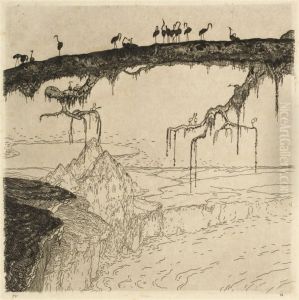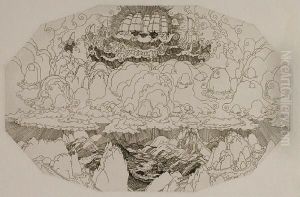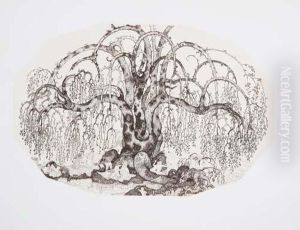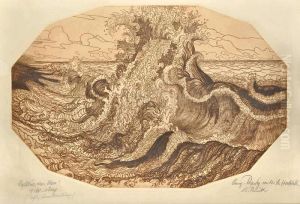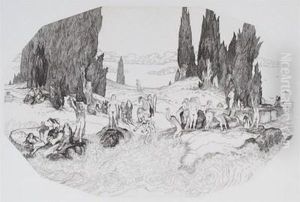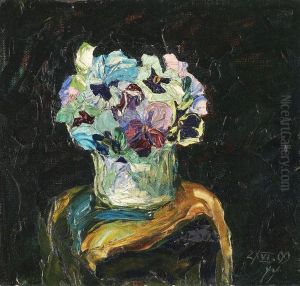Wenzel August Hablik Paintings
Wenzel August Hablik, born on August 4, 1881, in Brüx, Bohemia (now Most, Czech Republic), was a significant figure in the early 20th-century European avant-garde, known for his contributions to the fields of architecture, painting, design, and printmaking. Hablik's work is often associated with expressionism and the utopian movements of his time, showcasing a unique blend of fantastical imagination and architectural precision. His early life in Bohemia, amidst the rich cultural and historical milieu of the Austro-Hungarian Empire, provided a vibrant background that influenced his artistic vision.
Educated at the School of Applied Arts in Prague and later in Vienna, Hablik's exposure to the burgeoning art scenes in these cities was critical in shaping his artistic journey. By 1907, he had moved to Itzehoe, Germany, where he would spend the majority of his life and career. It was here that Hablik's artistic vision truly took flight, characterized by bold experiments in form, color, and perspective. His works from this period reflect a deep fascination with cosmic and geometric motifs, often depicting utopian landscapes and visionary architectural forms that seem to transcend the bounds of reality.
Hablik was also a prominent member of the German Werkbund, an association of artists, architects, designers, and industrialists, which aimed at bridging the gap between art and industry and promoting German art and design on the international stage. Through this affiliation, Hablik contributed to the development of modernist principles in art and architecture, advocating for a synthesis of functionality and aesthetic beauty.
One of Hablik's most notable contributions to the art world was his series of fantastical architectural drawings, created around 1920. These works envisioned grand, utopian structures and cities, filled with crystalline forms and surreal, labyrinthine spaces. They reflected not only his architectural aspirations but also his philosophical and spiritual beliefs, drawing on a mix of esoteric ideas and progressive social concepts.
Despite his visionary projects, Hablik remained relatively obscure during his lifetime, with much of his work gaining recognition only posthumously. Today, he is celebrated for his imaginative contributions to the expressionist movement and his role in the early 20th-century avant-garde. Wenzel August Hablik died on March 23, 1934, in Itzehoe, leaving behind a legacy that continues to inspire architects, designers, and artists interested in the intersection of utopian thought and artistic expression.

